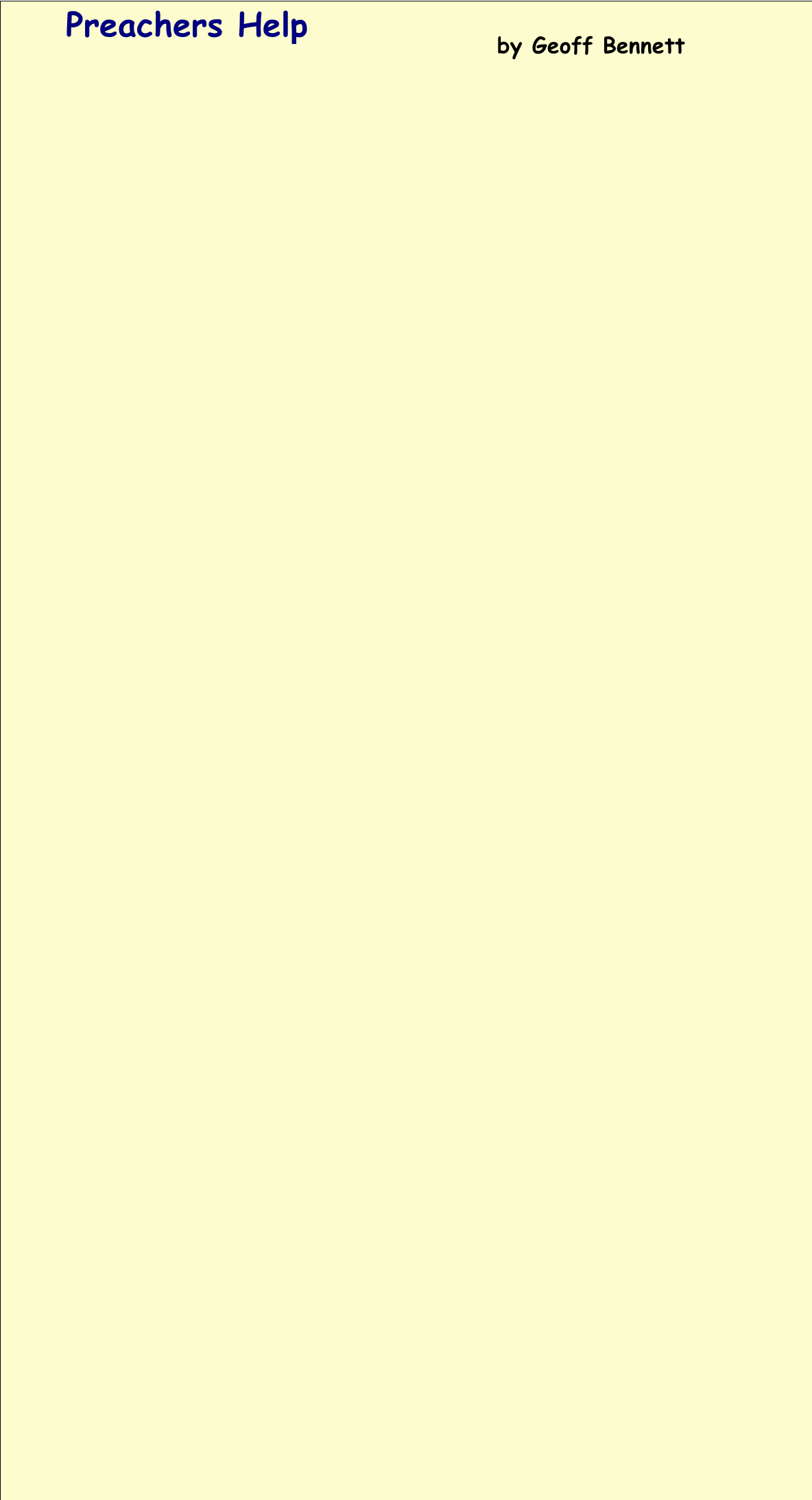
Welcome to my site for preachers

How the Bible came to us -
A father asked his son “Why were you kept in at school?” The son replied “I didn’t know where the Azores were” Father said “In future, just remember where you put things” And what the father knew about the Azores is more than many know of what God’s Book teaches about vital things.
Hello there, this week on Bible Focus we are looking at the origin of the Bible. We have seen that man could write from a very early point in history. We heard how the ancient Egyptian languages of Hieroglyphics and Demotic were translated.
Now here is another fascinating story this time it is Cuneiform -
But it was the British representative in Baghdad Major (later General) Sir Henry Rawlinson who -
Henry Rawlinson published an interpretation 1846.
Two years later an Irish clergyman Edward Hincks made great advances in that he discovered cuneiform was not an alphabet language and by 1857 fixed 252 wedges.
That year a Mr Fox-
So ancient writings had been understood. The ones I have mentioned are not Bible languages but they do help the archaeologists in their work.
What about our Bible? First I think it would be good to look at the Canon. I know it’s a big gun and an office within the Church of England but it has another meaning especially for the Bible. In Hebrew canon means a reed. In Greek it means a rod.
It came to mean a straight rod, measure or a ruler. Today the word means the accepted 66 books of the Bible. The rule of faith.
But modern scholars give it a different use, they want to have a canon within a canon. Here is their question “Is the Bible God’s Word? OR is there God’s Word in the Bible?” Friends this is a most dangerous error.
I love the quotation from C.S. Lewis in his little book ‘Of Fern Seeds and Elephants.’
He is talking about modern Bible scholars and says “They are so clever that they can read between the lines, the problem is, they cannot read the lines”
We have no clear knowledge of how the Old Testament canon was formed. The Jews have always accepted their Scriptures as inspired by God. The formation of the Old Testament was long and complicated. All we have is Jewish tradition and the writings of Josephus the great Jewish historian. It is generally accepted that Ezra -
The prophets in the Hebrew Bible are divided into two parts, the former and latter prophets. The former being Joshua, Judges, Samuel and Kings, the latter being Isaiah, Jeremiah, Ezekiel and the Minor Prophets. Thus making 8 books in all.
The writings which Jesus called the Psalms are -
Hold on! you say, we have 39! So something is not right. To make matters worse let me tell you that Josephus in his list of Old Testament books has only 22.
Well like most things there is an explanation. Josephus puts together Judges and Ruth into one book and Jeremiah with Lamentations. So that is the 24. But what about the 39? Well, we have 1 and 2 Samuel, 1 and 2 Kings, etc. We have 12 minor Prophets. So when you count them all up it comes to 39. So, no problem! The Hebrew Old Testament is just the same as our Old Testament today. Praise the Lord for that!.
Can we rely on the Old Testament? Yes we can. In the oldest and best manuscripts of the Old Testament there is on every page beside the text which is arranged in two columns -
Perhaps I ought to mention the Apocrypha. In some denominations they have it included in their Bible. It is in the Roman Catholic Bible. This is the name given to 14 books which were written during the inter-
Now these apocryphal books never really belonged to the canon of Scripture. No one knows where they came from. They were included in the Greek version of the Old Testament made in Alexandria about 245 BC. Also Jerome put them in the Latin Vulgate translation but he himself never accepted them.
Why do we not accept them? Well -
So today we have an Old Testament that is accurate and reliable -
| Powerpoint 2 |
| PowerPoint 3 |